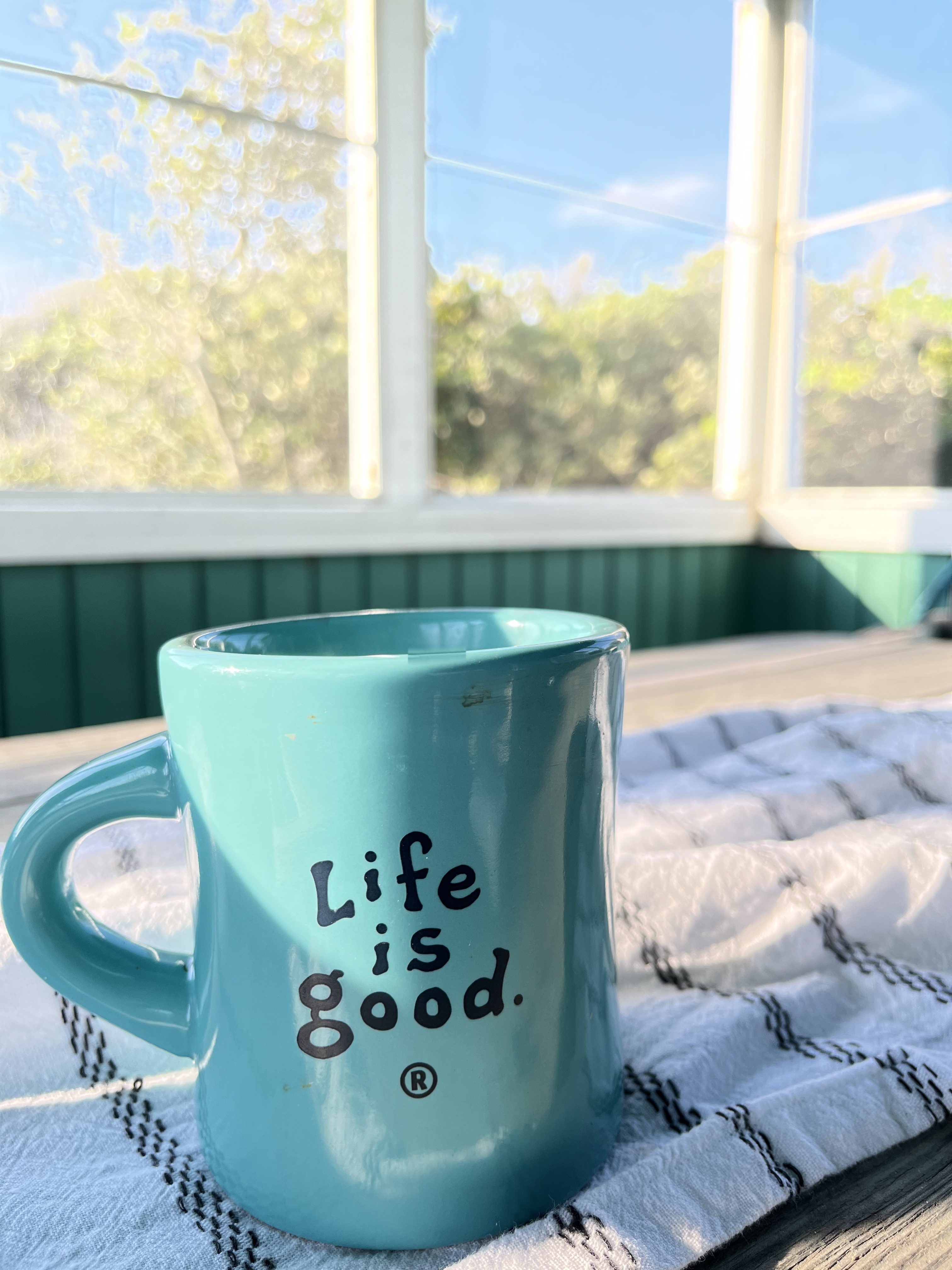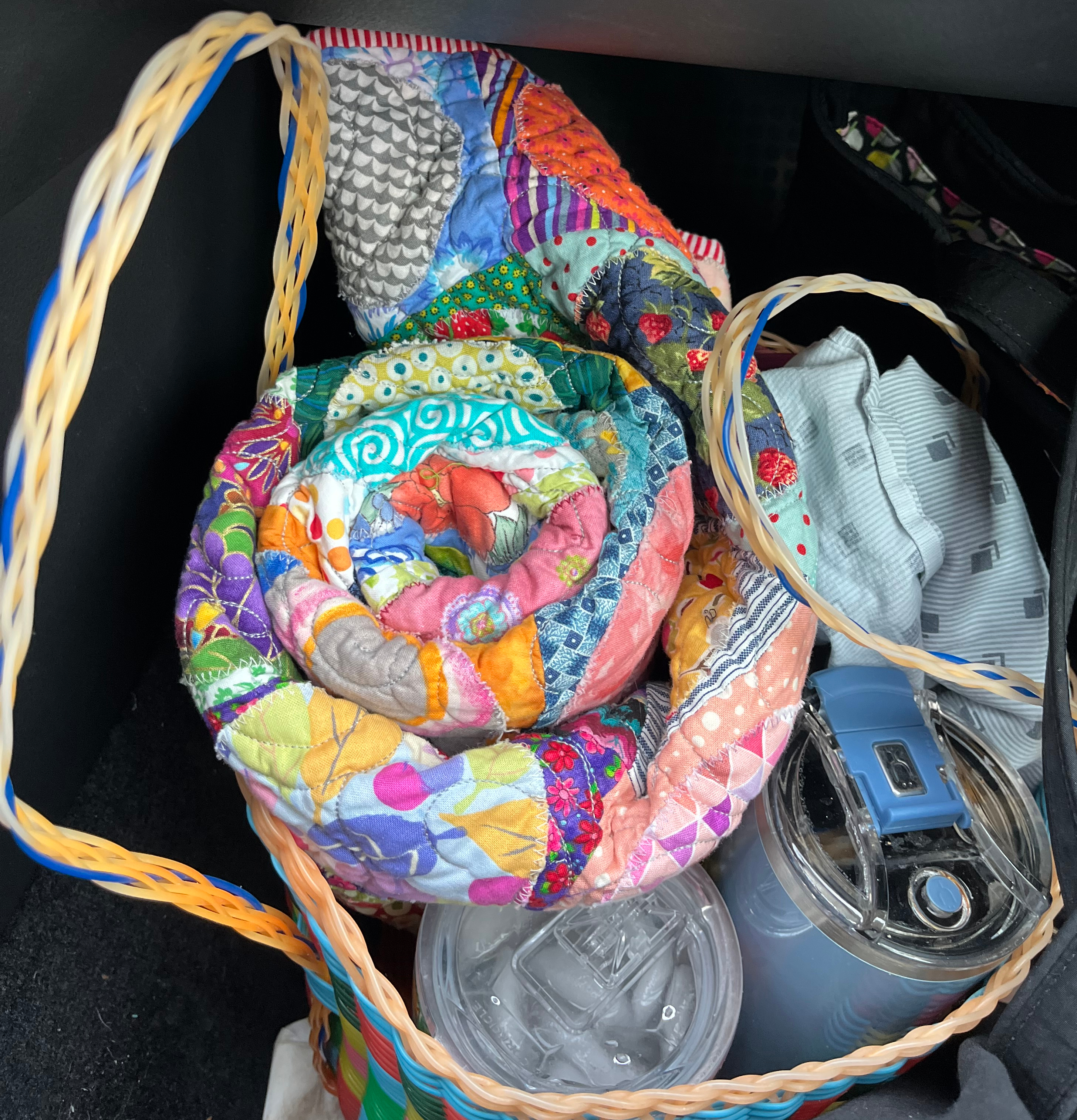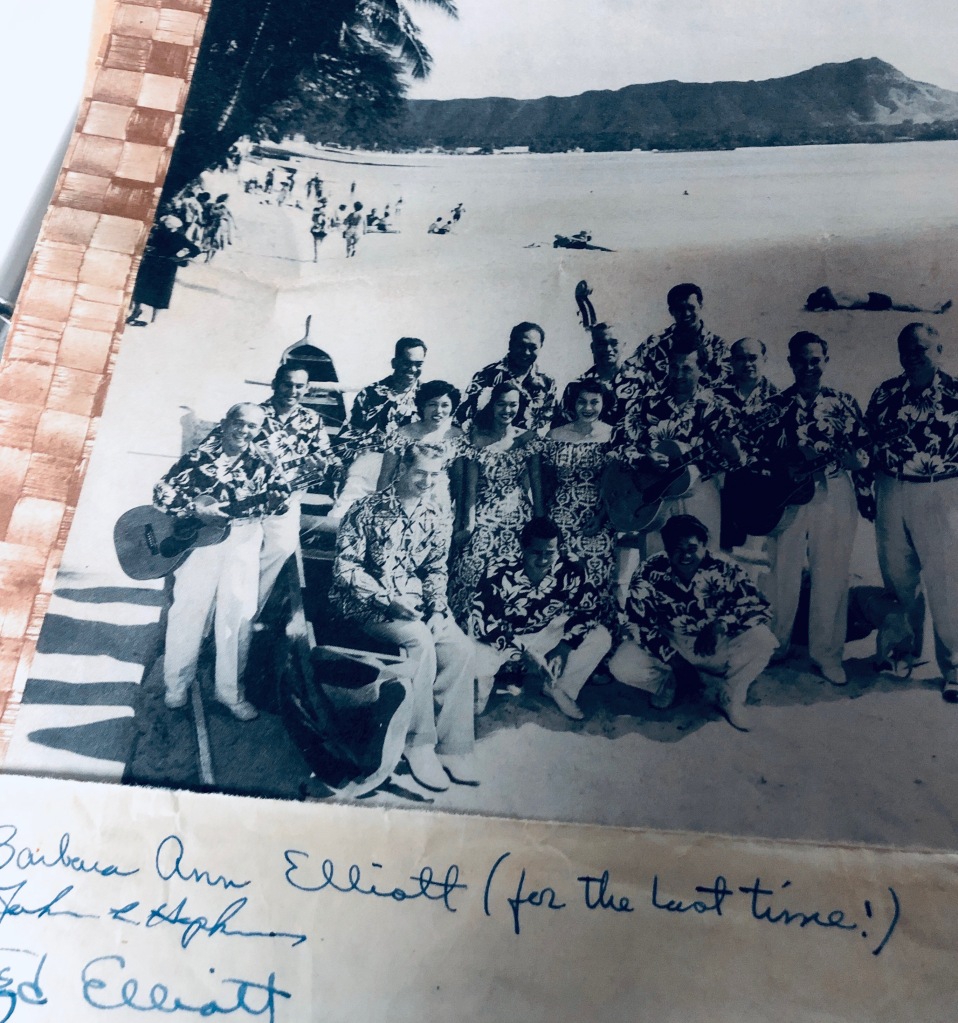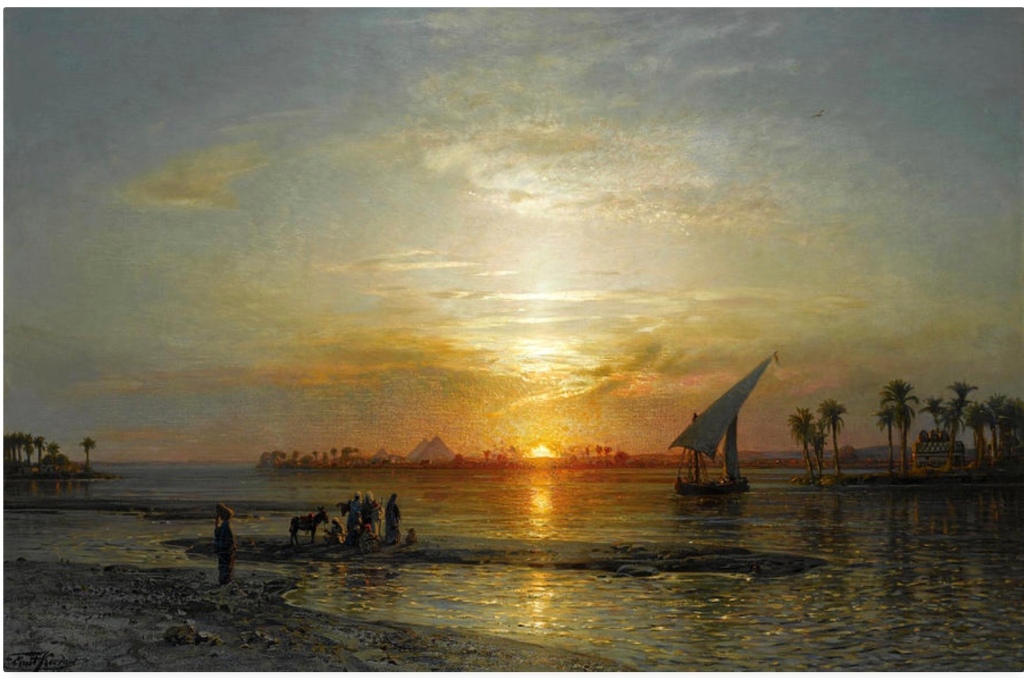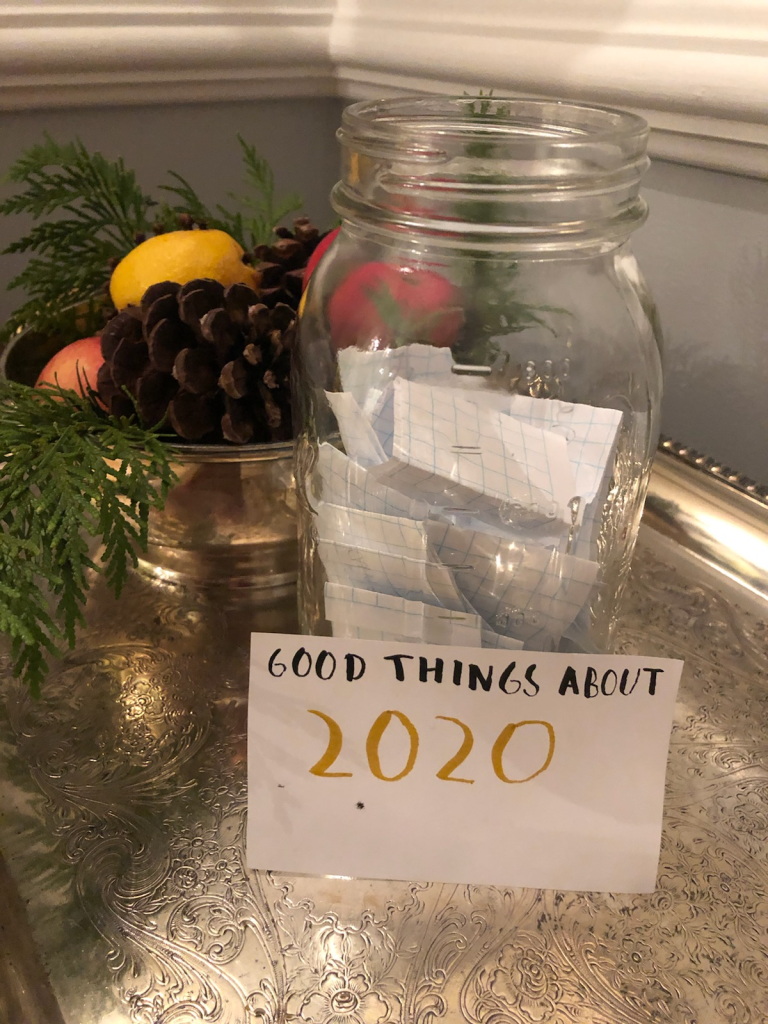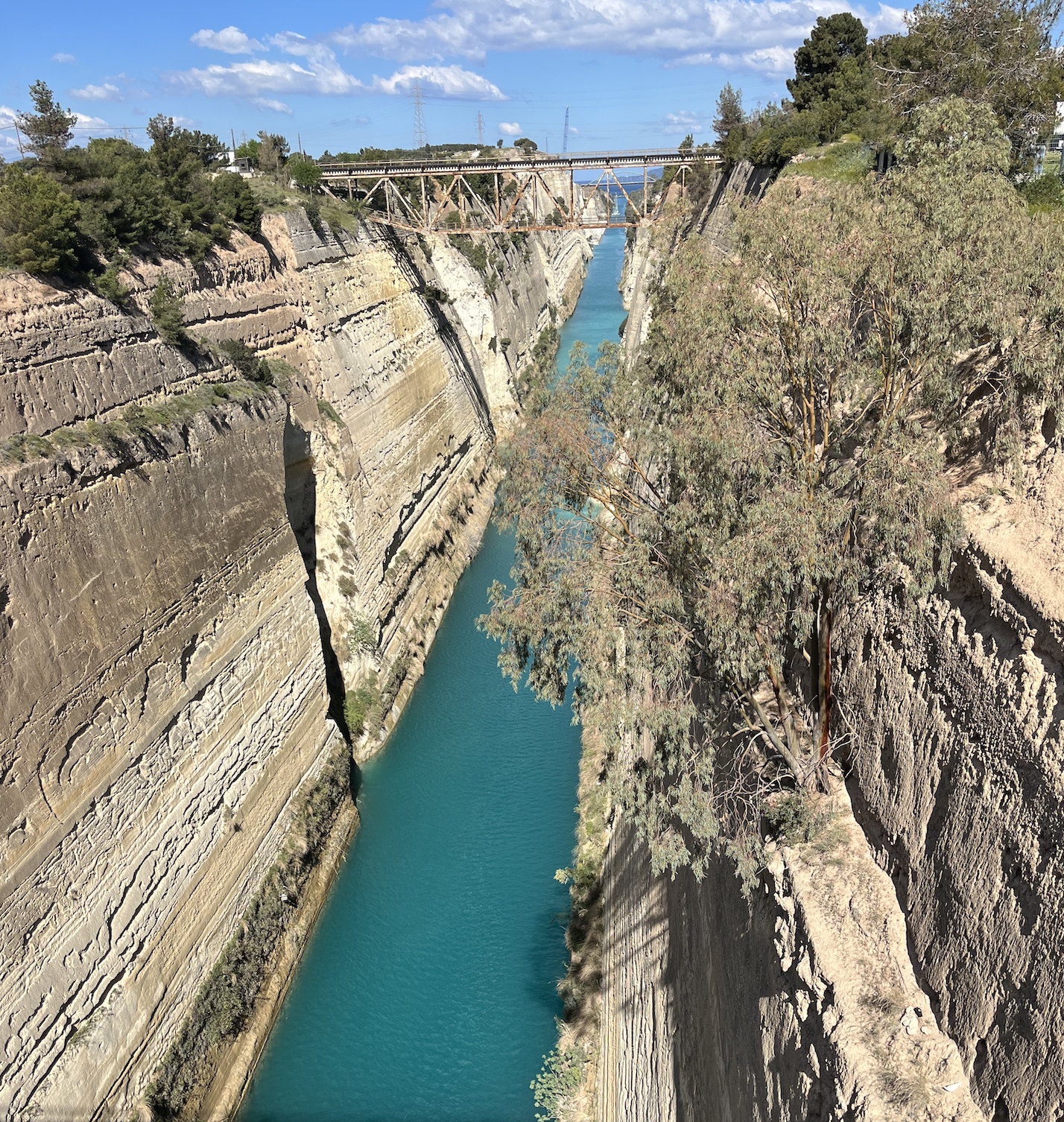
I am in remission. And I am so very, very grateful.
When we are born, we are issued a loose, gauzy garment of mortality. We wear it lightly. Freely. Invincibly. At least I did. That changed for me with a breast cancer diagnosis eighteen months ago. Suddenly, I was wearing that garment inside out– and its scratchiness was a constant reminder that life can be fleeting. In those early post-diagnosis days, my private weeping was my prayer, and it could be Wagner-esque in those predawn moments. My feelings were big and so deeply quiet. I was negotiating a raging storm with the sound turned off. I’d lived my story out loud my entire life, but now, I was learning about my own privacy and process. Like slow food, this “slow story” would take time to come out right.
I couldn’t understand why I couldn’t pray, but then I realized that the deep, wordless, underwater quiet that lay beneath fear and grief is prayer. I learned that this quiet was a loving force guiding me through wordless prayer until I could break through the surface with the words to pray. It felt like grief, but according to the people around me, It looked like courage. They work in tandem.
I didn’t stay in that bereftness. My (amazing) oncologist and outstanding medical team at Massey Cancer Center helped me find words and confidence. I crafted a crisp explanation to answer the asked and unasked questions. My friends and family surrounded me, and support came from near and far. The storm may have been on mute, but now my gratitude was on blast. The medical approach was in place; I was surrounded by family, friends, and a strong faith community at St. Paul’s Episcopal Church. I was on prayer lists across the city and across faiths. Being a cancer patient can be lonely, but I never had to be alone. And my husband…how could we fall more in love?
I found my prayer: “God, give me a long life. Hold the drama. Amen.”
I don’t know when that prayer began to shift. There is more to life than longevity. God, give me an awake life. Thank you for the joy tucked into each day. Help me to share it. Hold the drama. Amen
Curiosity is the antidote to fear. I researched brain chemistry. I read about cortisol– and how to lower it. I researched integrative medicine. I got a meditation coach. I stretched and did core strengthening with the most joy-filled and able dancer/exercise teacher you can imagine–Kate Webb Berk (once upon a time, I was HER second and third-grade teacher). I worked with a really good therapist. I turned to the experts in my friend group. I made an upbeat and inspiring playlist called “Annie’s Getting Better.” I amped up my gratitude practice. We did not miss celebrations. We went to the beach and hosted family dinners. We danced. I learned how to receive and found ways to give. People reached out to me in the most generous ways you can imagine.
Then, we found out those harsh treatments had not been entirely successful. I was sent back into the deep waters of quiet. I said no to the trial I was offered. And then, my stepdaughter Susanna was diagnosed with breast cancer. If one in eight women gets breast cancer, wasn’t I taking one for our team? She was not supposed to get this. My no to the trial became a yes. The trial was not as harsh as the first round of treatments. My hair began to grow back as Susanna was losing hers. She was stalwart. We talked every day. Our conversations ranged from meditation to make-up. We kept ourselves going, and we helped each other keep going.
I grew tired of the self-focus that comes with being a patient over the long haul. I told my friends that I wanted to hear about their lives, celebrate with them, and help them figure out life. My walking companions (in person or through my AirPods) honored that. I walked miles on the days when treatment was not debilitating.
I made our bed every day. I journaled without fail. I meditated. I prayed.
I got COVID twice and pneumonia once. I got bad burns from radiation.
I planned and cooked healthy meals. I experimented with new foods. Ben did the dishes.
Ben told me to start planning a trip for the end of treatment. I knew he should pick the trip. He never missed an infusion, and this had been hard on him, too. We decided on a pilgrimage in the footsteps of St. Paul in Greece and Turkey. The timing was right.
Before we left, I was told that I was in remission. I’d been waiting for that word. Here it was, and now I was bewildered. Am I cured? Will it come back? Where was my exaltation? What does it mean? I carried these questions as we moved through the beauty of Greece. I was working to wrestle the question mark into an ellipsis (“but wait…there’s more!”).
As young girls, we spent part of our summers in West Virginia. As we drove through tunnels in the mountains, my father would call out, “Who is going to be the first one to see the light at the end of the tunnel?” It is not a game where you can cheat. I learned to wait for it. I learned to peer through the dark for the light. I learned not to stop looking for it until I saw it. “I see it,” we would sing out, each claiming to be the first. “I see the light!”
I stood high above a ribbon of blue-green water, a canal connecting the Aegean and Ionian Seas. The sides of the deep canyon seemed so close together. The sudden metaphor was in front of me. On one side was the 18 months of treatment that I was ready to leave behind; on the other side, a life of wellness and wholeness with the people I love, day by day. In other words, remission.
When we got home, my oncologist confirmed I am in remission. I am invited to live healing, good health, and joy with the people I love. It is the invitation given to all of us at the beginning of life with that loose, gauzy garment of mortality. Mine will probably always feel a little scratchy now.
I think of those summer days driving through the mountain tunnels. “I see it,” I sing out to myself. “I see the light.” I am so grateful I know to look for it.



